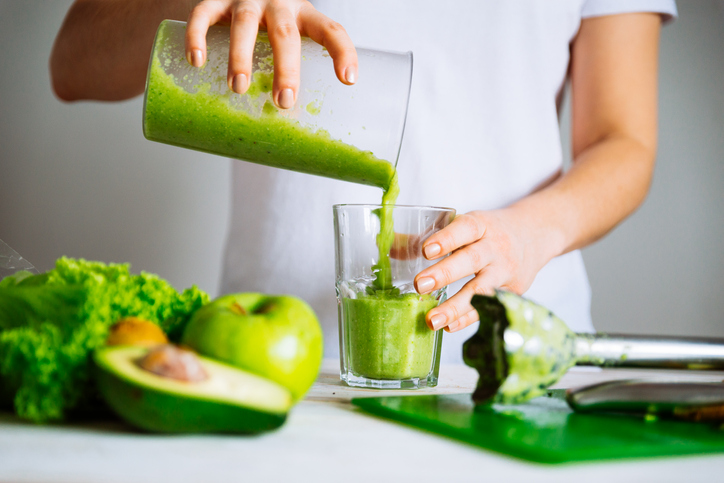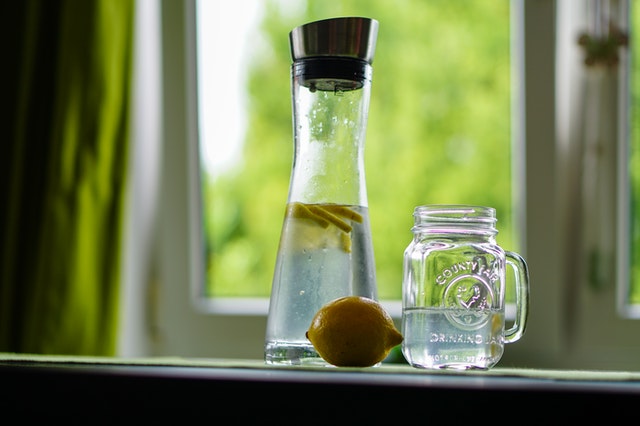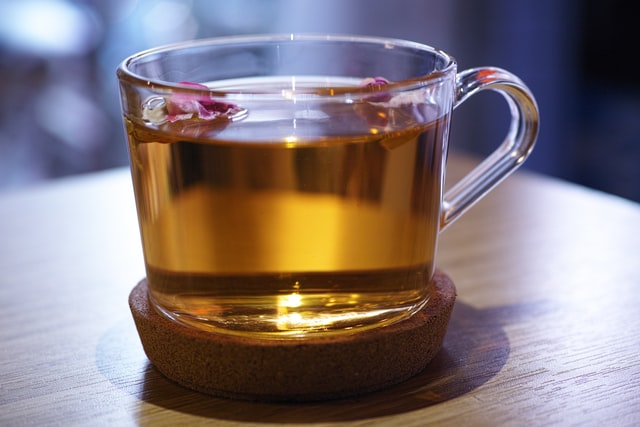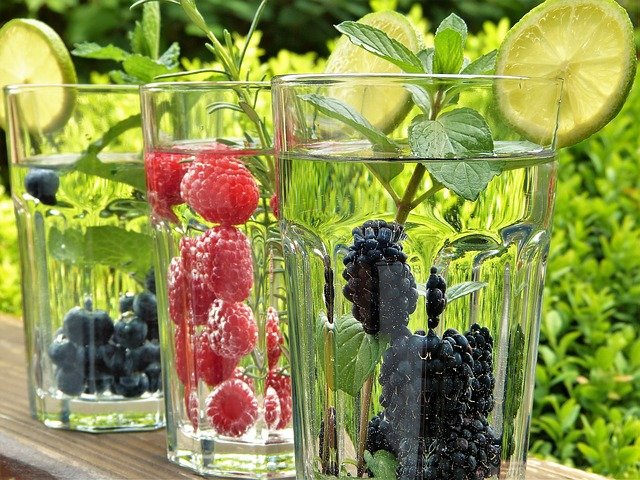
This is a guest post by Rocio Espinoza
The body boasts a sophisticated and rather complex system for eliminating potentially harmful substances from the body like heavy metals and other toxins that we may ingest from food or water or even breathe in through the air. However, for centuries, people have relied on body detox practices to cleanse their bodies in an attempt to rid unwanted substances that may have built up in their systems over time.
While current medical science does not suggest that humans need to engage in detox practices because of their bodies’ own natural functions, some practices may support the immune system, kidney, or digestive function. On the other hand, there is a vast anecdotal body of evidence, both past, and present, based on people’s positive experiences with various detox practices.
Here, we’ll explore some natural ways to detox at home that are not regarded as controversial by the medical community. Then, we’ll discuss more formal detox practices, how they’re regarded by modern medicine, and their potential benefits. If you are interested in detox, you should discuss your intended practices with your healthcare provider first. Your doctor can recommend ideal practices for you and, possibly, tell you what products or methods to avoid that could detract from your health and well-being.
What is a body detox, and when should you do it?

Detox diets and practices are extremely popular. People rely on these practices believing they can help them to lose weight, purge toxins from their bodies, enhance circulation, boost their energy, support their nutritional needs, or elevate some other aspect of their health. Again, it’s important to remember that not all detox practices and diets will enable people to achieve these benefits or even be safe to engage in.
However, they do suggest that many detox practices can support health and may offer healthful benefits like some listed here. By relying on safe detox methods, you may find that they enhance your health in some way.
Full body detox often involves dieting measures such as fasting, reducing exposure to toxins, eating certain foods, avoiding certain foods or additives, drinking certain beverages, taking certain herbs, taking colon cleanse products or supplements, and using a sauna. While these are common detox practices, not all of them may prove beneficial for the purpose of detoxification, and some may even be harmful.
People choose to detox for many different reasons. Some may wish to perform body detox practices before starting new lifestyle habits like adhering to a new fitness regimen. Some choose to detox because they’re feeling sluggish or unhealthy because of various lifestyle practices such as overeating fast or highly processed foods. Some opt for detox after coming into contact with an unhealthy toxic-rich environment.
What are some benefits of a detox?

Though not medically necessary for most people, some detox techniques may offer benefits that can enhance some aspects of health. These benefits may include:
- Improved hydration
- Improved nutrition
- Increased antioxidants in the diet
- Weight loss
- Digestive system cleanse
- Reduced stress
- Energy boost
- Reduced consumption of toxic foods
Depending on the types of detox techniques you choose, there may be more or fewer benefits associated with their practice.
What are some natural ways to detox?

Although the marketplace is swimming with detoxification products, there are actually various natural ways you can detox at home. We’ll outline some of the most popular natural detox methods here:
Drink Water
Drinking plenty of pure water each day is crucial for hydration. Water supports digestive health and regular bowel movements (which expels potentially harmful substances from your body), promotes weight loss, boosts energy levels, enhances mood, and even supports brain function. There is also some evidence that it may help to treat kidney stones.
Fasting
When detoxing, some people choose to fast for a day, ingest only liquids such as water or juice, or engage in intermittent fasting, which can be performed a week or even longer. Intermittent fasting, as it’s most commonly practiced, involves eating at certain times during one day, then eating a healthy diet the next day, and then fasting with minimal eating at certain times again. According to Johns Hopkins, intermittent fasting has health benefits, including weight loss and even reduced cholesterol. However, fasting without eating any food for a day is not regarded as a long-term solution for weight loss.
Quality sleep
Establishing a healthy sleep pattern can enhance the body’s detox processes. As we sleep, the body and brain continue to perform work. Proper rest allows the body to do what it needs to do to eliminate toxins during that time. There’s also medical evidence that suggests the brain may even flush out toxins while we sleep.
Limit alcohol and tobacco
Alcohol and tobacco put a strain on the body and our overall health. Eliminating alcohol and tobacco will have an immediate detoxifying effect on the body. These substances especially tax the liver, so reducing them or eliminating their use completely will make it easier for the liver to do its job of detoxifying the body.
Reduce your intake of sugar and processed foods
Sugar and processed foods are associated with reduced energy and alertness. By reducing your intake of these foods, you can propel your detox experience and may increase your feelings of energy and alertness. If you were feeling sluggish or fatigued before your detox, you might find that these unpleasant feelings begin to dissipate as you reduce your sugar and processed foods intake.
Eat antioxidants
Antioxidants help eliminate free radicals from the body, so, in a sense, they help detox at the cellular level. Free radicals are inevitable occurrences in the body; they occur with age, exposure to pollutants (i.e., smoking and alcohol), from what we eat, and normal biological processes. Too many free radicals, however, can lead to the development of disease.
Exercise

Exercise can be an effective way to kickstart a detox plan essentially because it can stimulate your body’s natural detox process into gear. Exercise can boost the heart and circulatory system, sending oxygen to all the body’s organs, including the kidneys and liver, that are essential for our own detox processes. Exercise can also positively impact digestive health and the sweating involved in exercise can lead to unclogged skin pores.
Reduce salt intake
Too much salt can leave the body bloated. Excess salt can also increase blood pressure. Some sodium is necessary for the body to carry out its normal functions, but an excess is not healthful. If you typically eat a diet rich in processed foods, you may want to consider reducing salt as part of your plan.
Drink tea
Drinking tea is a centuries-old technique for body detox. Tea contains many healthful properties like antioxidants and some amino acids. These compounds can support the body’s natural detoxification processes. Tea features cleansing properties but also boasts anti-inflammatory properties too. Check out this incredible article with the 10 best anti-inflammatory teas.
Juice detox
Some people practice a juice cleanse for one to three days. People believe that the fruits and vegetables in the juice—their nutrients—support the body’s nutritional needs while the liquid helps cleanse the body.
Body detox techniques and methods

Wim Hof
The Wim Hof method is a three-part process that’s believed to result in various benefits, including reconnection with nature and improved immune system response. The three main parts of Wim Hof are breathing, cold therapy, and commitment.
The breathing method is said to increase oxygen levels and provide more support for the immune system to rid the body of dangerous pathogens; this is the detox aspect of the practice. Cold therapy is also said to improve the immune system, trigger fat loss, and reduce inflammation. The commitment pillar of the process simply involves the practitioner’s willingness to adhere to the techniques over time.
Hydrotherapy
Hydrotherapy has a long history of therapeutic practice around the world. This form of therapy involves the application of water internally and externally. Some techniques associated with hydrotherapy include baths, pools, steam rooms, showers, colonics, enemies, and hot or cold water packs.
The practice of these techniques is believed to lead to numerous benefits such as boosting the body’s circulatory system and its ability to eliminate waste and other toxins. There is evidence that hydrotherapy may even improve cellular metabolic function that results in improved natural healing processes.
Steam bath
 The practice of steam bathing goes back to at least ancient Greek and Roman times. A steam bath involves sitting in an enclosed steam-filled room. The steam is thought to induce relaxation and detoxification. Unlike a sauna which employs dry heat to heat an enclosed space, steam baths use heated water. The humidity, as well as the heat, are thought to provide many benefits to bathers.
The practice of steam bathing goes back to at least ancient Greek and Roman times. A steam bath involves sitting in an enclosed steam-filled room. The steam is thought to induce relaxation and detoxification. Unlike a sauna which employs dry heat to heat an enclosed space, steam baths use heated water. The humidity, as well as the heat, are thought to provide many benefits to bathers.
The steam can help to detoxify the skin as well as provide other health benefits such as:
- Reduced blood pressure
- Reduced congestion
- Improved circulation
- Reducing joint stiffness
- Alleviating stress
Many people enjoy makeshift steam baths at home simply by running the hot water or shower with their bathroom door closed tightly. Area fitness centers may feature steam baths or saunas.
Panchakarma
Panchakarma is an ayurvedic practice that is thought to help purify and rejuvenate the body. The practice stretches back 5,000 years ago and is still practiced in its homeland of India but has made its way to the West as well. Panchakarma is essentially a process of detoxification designed to remove impurities from the body and mind.
The process should take place over several days and involves removing waste via the urinary tract, intestines, sweat glands, and blood vessels. The practice of Panchakarma has been modernized (no bloodletting, for instance, in modern techniques). Practitioners can expect steps like steam baths, cleansing enemas, massage with herb oils, gentle laxatives, nasal administration, and a specialized diet during the process.
Practitioners of Panchakarma report several benefits with the practice, including:
- Improved immune system function
- Removal of impurities
- Improved relaxation
- Mind and body restoration
- Improved mental clarity
- Improved strength
Cryotherapy
Cryotherapy is a practice that exposes the body to extremely cold, sub-zero temperatures. Supporters of the practice report that it triggers whole-body detoxification, supports immune system function, burns calories, increases circulation and can promote tissue healing. The practice may also reduce inflammation and joint pain.
Cryotherapy tanks are designed for one or up to three people. The tank covers the person’s body, but the head and neck remain exposed outside of the tank. Typically, people remain in a tank and are subjected to cold air for three to five minutes. These processes are not regulated by the FDA. If you are considering this type of detox therapy, be sure to first consult with your doctor.
Chelation therapy
Chelation therapy is a treatment that is specifically designed to remove toxins like heavy metals from the body. When metals such as iron, lead, or mercury build up, they can have a toxic effect on the body. Chelation therapy is a type of drug treatment designed to remove these toxic metals from the body.
The drugs used in chelation therapy may be delivered in pill form or intravenously. The drugs attach themselves to the metals within the body and then are removed via urination. This therapy is prescribed by doctors for metal poisoning. While some alternative medical practitioners may use it for other conditions, it is only FDA-approved for metal detoxification. The benefit of chelation therapy is that it can remove the toxic metals from the body before making the individual sick.

If you have questions about body detox related to your health or any conditions you may have, be sure to talk to your healthcare provider, especially before attempting to engage in any of the practices listed here or others. While these practices may enhance your detox plan or your health, it’s always important to talk to your doctor first.



Leave a Reply